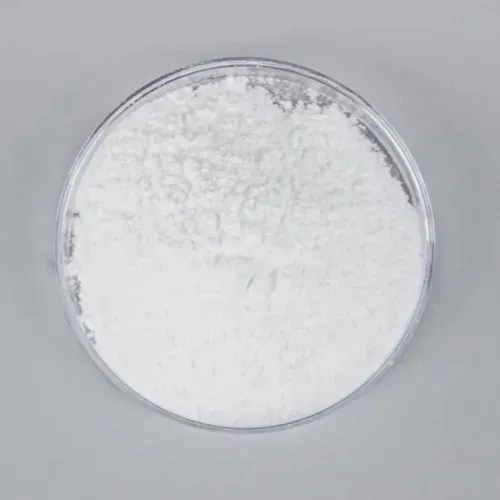Warning: Undefined array key "title" in /home/www/wwwroot/HTML/www.exportstart.com/wp-content/themes/1198/header.php on line 6
Warning: Undefined array key "file" in /home/www/wwwroot/HTML/www.exportstart.com/wp-content/themes/1198/header.php on line 7
Warning: Undefined array key "title" in /home/www/wwwroot/HTML/www.exportstart.com/wp-content/themes/1198/header.php on line 7
Warning: Undefined array key "title" in /home/www/wwwroot/HTML/www.exportstart.com/wp-content/themes/1198/header.php on line 7
- Afrikaans
- Albanian
- Amharic
- Arabic
- Armenian
- Azerbaijani
- Basque
- Belarusian
- Bengali
- Bosnian
- Bulgarian
- Catalan
- Cebuano
- China
- China (Taiwan)
- Corsican
- Croatian
- Czech
- Danish
- Dutch
- English
- Esperanto
- Estonian
- Finnish
- French
- Frisian
- Galician
- Georgian
- German
- Greek
- Gujarati
- Haitian Creole
- hausa
- hawaiian
- Hebrew
- Hindi
- Miao
- Hungarian
- Icelandic
- igbo
- Indonesian
- irish
- Italian
- Japanese
- Javanese
- Kannada
- kazakh
- Khmer
- Rwandese
- Korean
- Kurdish
- Kyrgyz
- Lao
- Latin
- Latvian
- Lithuanian
- Luxembourgish
- Macedonian
- Malgashi
- Malay
- Malayalam
- Maltese
- Maori
- Marathi
- Mongolian
- Myanmar
- Nepali
- Norwegian
- Norwegian
- Occitan
- Pashto
- Persian
- Polish
- Portuguese
- Punjabi
- Romanian
- Russian
- Samoan
- Scottish Gaelic
- Serbian
- Sesotho
- Shona
- Sindhi
- Sinhala
- Slovak
- Slovenian
- Somali
- Spanish
- Sundanese
- Swahili
- Swedish
- Tagalog
- Tajik
- Tamil
- Tatar
- Telugu
- Thai
- Turkish
- Turkmen
- Ukrainian
- Urdu
- Uighur
- Uzbek
- Vietnamese
- Welsh
- Bantu
- Yiddish
- Yoruba
- Zulu
ส.ค. . 12, 2024 05:32 Back to list
Exploring the Benefits and Controversies of Aspartame and Sucralose as Sugar Alternatives
The Sweet Duo Aspartame and Sucralose
In the ever-evolving landscape of food and beverage production, artificial sweeteners have become a pivotal part of the discussion surrounding health, diet, and obesity. Among the most popular sweeteners today are aspartame and sucralose, both of which have made significant marks in the low-calorie sweetener market. This article explores the properties, uses, and controversies surrounding these two artificial sweeteners.
Aspartame The Controversial Classic
Aspartame, first discovered in 1965, is a low-calorie sweetener that is approximately 200 times sweeter than sucrose (table sugar). Comprised of phenylalanine, aspartic acid, and methanol, aspartame is most commonly found in diet sodas, sugar-free products, and any number of low-calorie snacks and beverages. Its widespread use can be attributed to its ability to impart sweetness without the extra calories, making it a popular choice among those looking to reduce sugar intake.
However, the use of aspartame has not been without controversy. Concerns regarding its safety have sparked numerous debates among health professionals, consumers, and regulatory agencies. Some studies have suggested potential links to health issues such as headaches, allergic reactions, and even more severe conditions like cancer. However, extensive research and numerous evaluations by reputable health organizations, including the FDA, the European Food Safety Authority, and the World Health Organization, have concluded that aspartame is safe for consumption within the established daily limits. Nonetheless, individuals with a rare genetic disorder called phenylketonuria (PKU) must avoid aspartame, as they are unable to metabolize phenylalanine adequately.
Sucralose The Sweet Alternative
Sucralose, marketed under the brand name Splenda, was discovered in 1976 and is derived from sugar through a process that selectively replaces three hydrogen-oxygen groups with chlorine atoms. This modification makes sucralose approximately 600 times sweeter than sucrose, and it has a distinct advantage over aspartame in that it is heat-stable. This characteristic makes it suitable for cooking and baking, making it a versatile option for both consumers and manufacturers.
aspartame sucralose

One of the most significant benefits of sucralose is that it passes through the body without being metabolized, contributing no calories to the diet. Its sweet flavor profile remains consistent under heat, making it a preferred ingredient in several kitchen and processed products. As with aspartame, sucralose has been reviewed by various health authorities, which have deemed it safe for consumption, with minimal side effects reported.
The Health Debate
Despite their advantages, both aspartame and sucralose have faced scrutiny from segments of the public that are wary of artificial ingredients. Some health enthusiasts advocate for a return to natural sweeteners, such as honey or agave, arguing that whole foods are better for long-term health compared to processed sweeteners. Critics of artificial sweeteners often point to studies suggesting that they may disrupt gut microbiota or encourage sugar cravings, which could counter their intended weight-loss effects.
Moreover, consumers are increasingly turning to clean-label products; thus, both aspartame and sucralose may find themselves competing against options labeled as natural or organic. As awareness of food provenance grows, it remains to be seen how the future of these artificial sweeteners will unfold.
Conclusion
Aspartame and sucralose represent two sides of the artificial sweetener coin, offering sweet alternatives to traditional sugar while fostering ongoing discussion about health and safety. As consumers become more discerning about what they put into their bodies, the landscape will continue to shift, demanding transparency and a deeper understanding of nutritional science. Whether one prefers the classic sweetness of aspartame or the baking versatility of sucralose, both sweeteners serve as reminders of the complex interplay between health, technology, and dietary choices in contemporary society.
Latest news
-
Certifications for Vegetarian and Xanthan Gum Vegetarian
NewsJun.17,2025
-
Sustainability Trends Reshaping the SLES N70 Market
NewsJun.17,2025
-
Propylene Glycol Use in Vaccines: Balancing Function and Perception
NewsJun.17,2025
-
Petroleum Jelly in Skincare: Balancing Benefits and Backlash
NewsJun.17,2025
-
Energy Price Volatility and Ripple Effect on Caprolactam Markets
NewsJun.17,2025
-
Spectroscopic Techniques for Adipic Acid Molecular Weight
NewsJun.17,2025

